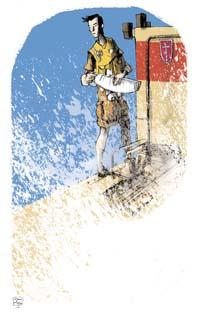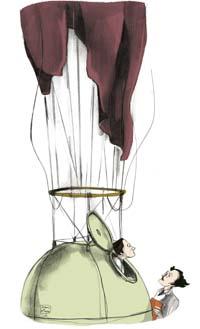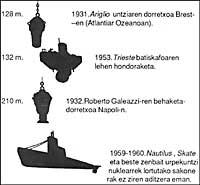The Piccard, adventurous scientists
2011/03/13 Etxebeste Aduriz, Egoitz - Elhuyar Zientzia
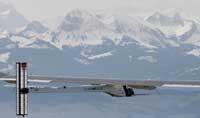
We do not know if the Swiss will reach the goal, but it will not be his first feat. In 1999, Bertrand Piccard was the first to tour the world in a non-stop balloon.
Bertrand's grandfather was the first person to ascend to the stratosphere. Auguste Piccard was a physicist who wanted to climb the stratosphere to investigate cosmic rays. He also made the ascension in balloon. To survive under low stratospheric pressure, he built a cabin that would not allow the air to exit, keeping inside a normal atmosphere. All the specialists of the time told him that it was impossible to do so. "But the only excuse they could make was that it had never been so," says Piccard in his book Earth, sky, and sea. "How many times have I heard this kind of reasoning!"
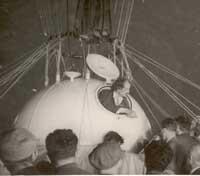
Piccard designed a spherical cabin. Two meters in diameter, a 3.5 mm aluminum wall and eight round windows for observation. He also designed the balloon that would raise the sphere to the stratosphere, which was huge.
Piccard and Paul Kipfer left Augsburg at four and twenty-five in the morning. And at 28 minutes they were at 15,500 meters, in the stratosphere!
But after a while they realized they had a problem: the rope that controlled the balloon exhaust valve did not work! Without opening the valve they could not bring down the balloon. They depended on external conditions: until evening, that is, until cooling, they would not begin to descend. But where would they be by then? What if they fell into the sea?
At 17 hours of departure they landed in the Alps at 2,600 meters. "It would have been a wonderful place if it hadn't been so cold! says Piccard in his book. "We sleep wrapped in the fabric of the globe."
No one was ever so tall. And 20 years later Auguste Piccard would break the opposite mark, descending lower than anyone else. However, Piccard's goal was not to break marks, but to open new avenues of research, to discover ways of observing what had not been observed until then.
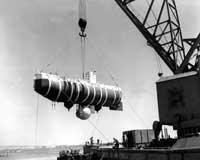
Batiscafo Trieste. There Jackes Piccard descends to a depth of 10,916 m. (Picture: S.U. Naval Historical Center Photograph).
Together with his son Jackes, father of Bertrand, he founded the Batiscafo Trieste. Basically it was the same idea as the stratospheric balloon: a spherical steel cabin, crowned by a large float tank. The tank was to be filled with gasoline (lighter than water) to ascend the bottom, and to sink it had two steel cylinders full of iron granules that crossed the float tank.
In 1953 parents and children broke all records, down to 3,167 meters. Seven years later, U.S. Lieutenant Jackes Piccard and Donald Walsh descended to the deepest point of the Mariana Trench with the same beater. At 4 hours and 48 minutes of their departure they reached the bottom. 10.916 m. There they spent 20 minutes carrying out various measurements and observations. And Piccard saw something like a sole. At the bottom of the ocean there were also living beings!
It was never so low. And since then it has never been so low.
Bertrand is now on the path of father and grandfather. Turning the globe around, the grandson fulfilled a dream that his grandfather could not fulfill. It is now to be seen if solar energy will be the first to go around the world.
Published in 7k

Gai honi buruzko eduki gehiago
Elhuyarrek garatutako teknologia



